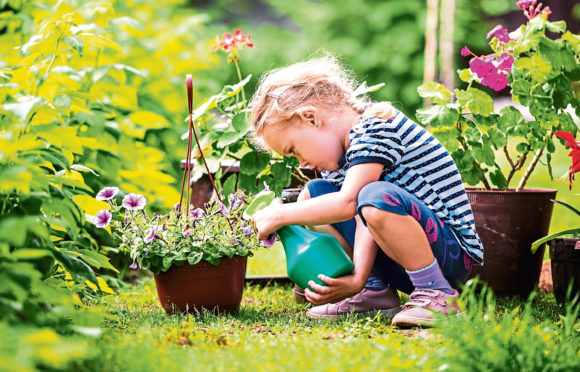
Now summer’s here, many people will be rolling up their sleeves and getting stuck into their gardening.
For green-fingered types, however, decking out an outdoor space can be costly, particularly if it involves several trips down to the garden centre. Previous research from Lloyds Bank has found we spend an average of £170 on our gardens over summer.
Of course, if you love your garden then this may be money well spent – but it’s always handy to consider ways to trim back and save some cash, and still have your garden brimming over with blooms. Here’s how…
Join a local garden club
This is a great way to get very cheap, or free, plants. You could also pick up some tips from other members and find out from them which plants grow particularly well in your area.
Think small
Large plants can make an instant impact in the garden, but they can also be costly. You could save a lot of money by growing plants yourself from seed or, if that sounds too tricky, some retailers will sell very young plants. These can then be potted on at home until they’re big enough to plant out. To boost your chances of successful growing to maturity, you’ll need to be prepared to give your plants plenty of attention.
Divide plants
If your garden beds are looking a bit patchy, you don’t necessarily need to head out to the garden centre to buy new plants. Try splitting some of the plants already growing there into smaller clumps and dotting them around to fill in any gaps in your planting. As well as multiplying the number of plants you have, it could encourage any tired-looking perennials to grow more vigorously, giving them a fresh lease of life. Plants that grow in clumps and can potentially be divided include irises, bamboos ornamental grasses and anemones. To boost your chances of dividing plants successfully, the Royal Horticultural Society (rhs.org.uk) website suggests dividing plants when they’re not in active growth. For example, summer-flowering plants could be divided in spring or autumn.
Re-use your plastic pots
Concern around the amount of stuff that gets thrown away – particularly plastics – has been growing in recent years. As many of the plants we buy come in black plastic pots, think about creative ways of re-using them for other purposes, whether it’s to pot on other plants, store garden tools in, or to upcycle into something else.
Make your own compost
Just add vegetable peelings, soft hedge clippings, cut grass and old bedding plants and you’re good to go. Spring can be a good time to get started, as the warmer months help the compost rot down more quickly.
Save money on gardening tools
Look out on local community websites, as well as websites where people are giving away items for free. Also, ask your family if they have any old tools too!
Grow your own food
Whether your aiming for “best in show” tomatoes or just planting some fresh herbs into pots on your windowsill to throw into meals, growing plants for food can be a tasty way to make savings.

Enjoy the convenience of having The Sunday Post delivered as a digital ePaper straight to your smartphone, tablet or computer.
Subscribe for only £5.49 a month and enjoy all the benefits of the printed paper as a digital replica.
Subscribe